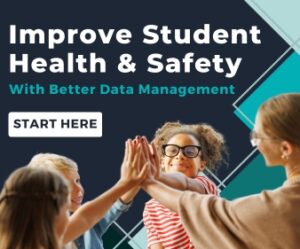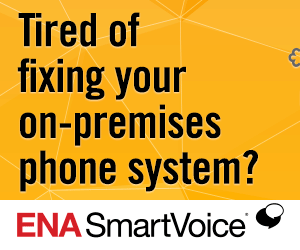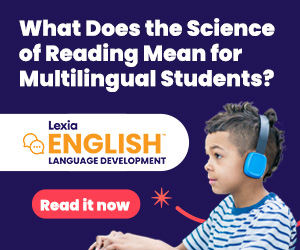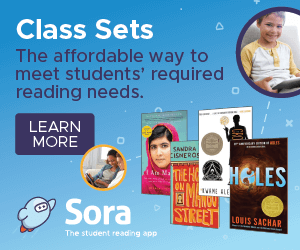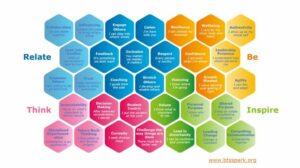Key points:
Social-emotional learning (SEL) is an integral part of today’s schools. Through SEL, students learn how to manage and regulate their emotions, identify and work through tough feelings, and serves as a foundation that supports students’ personal and academic achievements.
There are many resources to guide SEL implementations in districts and schools (CASEL is a great place to start). Here’s a look at how five educators are approaching SEL integration in their districts, schools, and classrooms.
Over the past two years, Tempe Union High School District has centered its focus on prioritizing student mental health, writes Dr. Kevin J. Mendivil, the district’s superintendent. District leaders and educators took several steps to establish solid mental health support, including asking student representatives what social-emotional support they and their fellow students needed, partnering with Care Solace to coordinate mental health care for needs that exceed the scope of school-based services, and normalizing conversations around mental health, which is one of the district’s most significant wins. Learn more about how the district is actively supporting student mental health and SEL.
School bullying is a consistently tough issue to address, but students in Alabama met that challenge head-on when they participated in the PACER Center’s National Bullying Prevention Center, which engages and empowers kids to combat bullying in all its forms. Through the Students with Solutions contest, 5th grade students in Dr. Yuvraj Verma’s Birmingham City Schools System classroom worked together to raise awareness about bullying and encourage children to actively participate in addressing this issue. This challenge amplified their voices and empowered them to inspire and support one another, creating a united front against bullying. Here’s how Dr. Verma guided students.
With increased awareness of student mental health needs, many districts are examining how to elevate the impact of school counselors. With increased awareness of student mental health and the need for student support, many districts are asking themselves: How do we elevate the impact of our school counselors? Here’s how Livingston Middle School in rural California achieved just that. Alma Lopez, lead school counselor at California’s Livingston Middle School and the 2022 School Counselor of the Year by the American School Counselor Association, offers insight and advice for other schools looking to improve school counselors’ reach and, in turn, boost student outcomes.
SEL skills are essential for navigating both academic and non-academic environments successfully, and they’re critical for improving outcomes. For SEL instruction to be effective, however, educators must create a welcoming and inclusive learning culture for everyone. It’s not realistic to ask students to develop an understanding of and empathy for diverse people and perspectives if their own needs and perspectives aren’t valued and supported within the classroom environment. Educators must practice and model these ideals for themselves if they expect students to acquire them. Implementing culturally responsive teaching practices, incorporating UDL into the learning design process, and building accessibility into every learning experience are three critical components. Read more here, as George Hanshaw is the director of eLearning operations for Los Angeles Pacific University, explains his school’s approach.
Damion Morgan, a social-emotional learning specialist in Windsor Public Schools, notes the importance of before- and after-school programs–the bookends of the school day. Before- and after-school programs offer critical support, including caring and supportive mentors, as well as safe spaces where students build confidence and a sense of belonging. They also provide opportunities to work collaboratively, problem solve, and think critically. SEL skills are not separate from those activities–SEL is not sprinkled on the cupcake; it’s part of the cupcake. Before- and after-school programs must make every interaction more intentional to complement classroom learning. But to ensure that these programs are set up for success, there are two essential questions every program coordinator should ask: “How well do I know my students?” and “How can I ensure my program meets their needs?” Learn more about the district’s strategy for integrating SEL into before- and after-school programs.
- SEO Powered Content & PR Distribution. Get Amplified Today.
- PlatoData.Network Vertical Generative Ai. Empower Yourself. Access Here.
- PlatoAiStream. Web3 Intelligence. Knowledge Amplified. Access Here.
- PlatoESG. Carbon, CleanTech, Energy, Environment, Solar, Waste Management. Access Here.
- PlatoHealth. Biotech and Clinical Trials Intelligence. Access Here.
- Source: https://www.eschoolnews.com/sel/2024/01/24/how-5-educators-approach-sel/
- :has
- :is
- :not
- :where
- $UP
- 1
- 12
- 2022
- 250
- 30
- a
- About
- academic
- accessibility
- achieved
- achievements
- acquire
- actively
- address
- addressing
- advice
- after-school
- against
- Alabama
- All
- ALMA
- also
- American
- Amplified
- an
- and
- Angeles
- Another
- approach
- approaching
- ARE
- around
- AS
- ask
- asking
- Association
- At
- author
- awareness
- BE
- belonging
- Birmingham
- boost
- both
- build
- Building
- bullying
- but
- by
- california
- CAN
- care
- centered
- challenge
- Children
- City
- classroom
- College
- combat
- Complement
- components
- confidence
- consistently
- conversations
- coordinate
- Coordinator
- create
- Creating
- critical
- culturally
- Culture
- day
- Design
- design process
- develop
- Director
- district
- diverse
- do
- dr
- Editorial
- educators
- Effective
- elearning
- ELEVATE
- emotions
- Empathy
- empowered
- empowers
- encourage
- engages
- ensure
- Environment
- environments
- essential
- establish
- Every
- everyone
- Examining
- exceed
- expect
- experience
- Explains
- feelings
- fellow
- five
- Focus
- For
- forms
- Foundation
- from
- front
- George
- grade
- graduate
- great
- guide
- guided
- Health
- Health Care
- High
- his
- How
- How To
- However
- http
- HTTPS
- i
- ideals
- identify
- if
- Impact
- implementations
- implementing
- importance
- improve
- improving
- in
- Including
- Inclusive
- incorporating
- increased
- insight
- inspire
- integral
- Integrating
- integration
- Intentional
- interaction
- into
- issue
- ITS
- journalism
- jpg
- just
- kids
- Know
- lead
- leaders
- LEARN
- learning
- Livingston
- Look
- looking
- make
- manage
- many
- Maryland
- Media
- Meets
- mental
- Mental health
- mentors
- merrill
- met
- Middle
- model
- more
- Morgan
- most
- must
- my
- navigating
- Need
- needed
- needs
- Notes
- of
- offer
- on
- ONE
- Operations
- opportunities
- Other
- our
- outcomes
- own
- Pacific
- part
- participate
- participated
- partnering
- past
- People
- personal
- perspectives
- photo
- Place
- plato
- Plato Data Intelligence
- PlatoData
- points
- Posts
- practice
- practices
- prestigious
- Prevention
- prioritizing
- Problem
- process
- Program
- Programs
- provide
- public
- Questions
- raise
- reach
- realistic
- Regulate
- Representatives
- Resources
- responsive
- Rural
- s
- safe
- School
- Schools
- scope
- sense
- separate
- serves
- Services
- set
- several
- she
- should
- significant
- skills
- solid
- Solutions
- SOLVE
- spaces
- specialist
- start
- Steps
- Strategy
- Student
- Students
- success
- Successfully
- support
- Supported
- Supporting
- supportive
- Supports
- system
- Teaching
- that
- The
- their
- Them
- themselves
- There.
- These
- they
- think
- this
- those
- three
- Through
- to
- today’s
- together
- took
- tough
- TURN
- two
- understanding
- union
- United
- university
- University of Maryland
- URL
- valued
- VOICES
- we
- welcoming
- WELL
- What
- when
- which
- Windsor
- Wins
- with
- within
- Work
- worked
- year
- years
- zephyrnet





